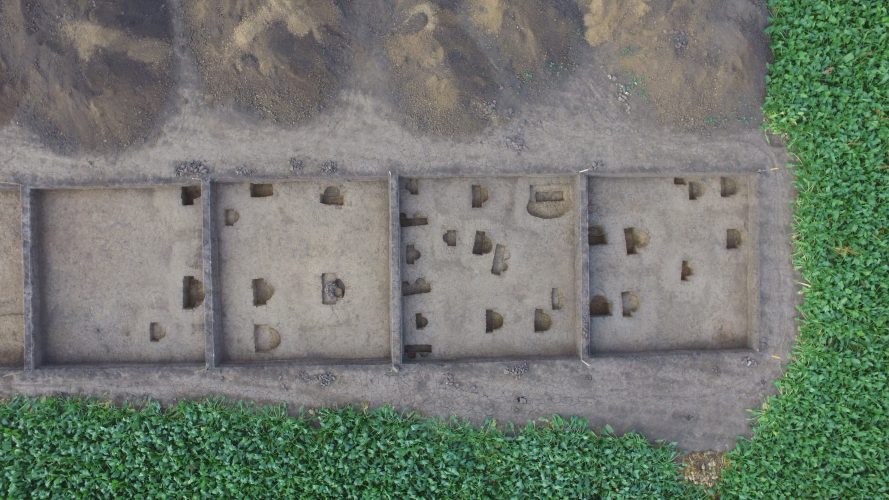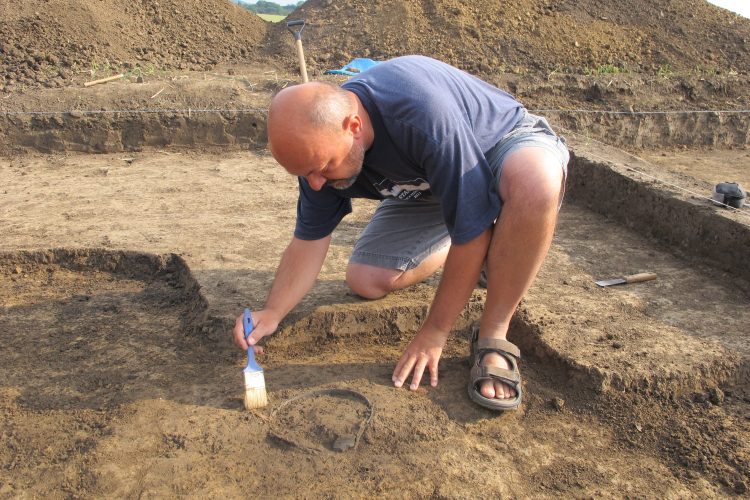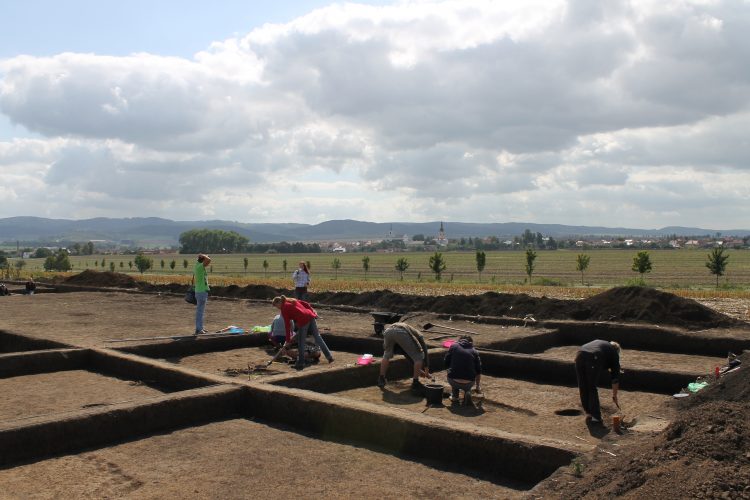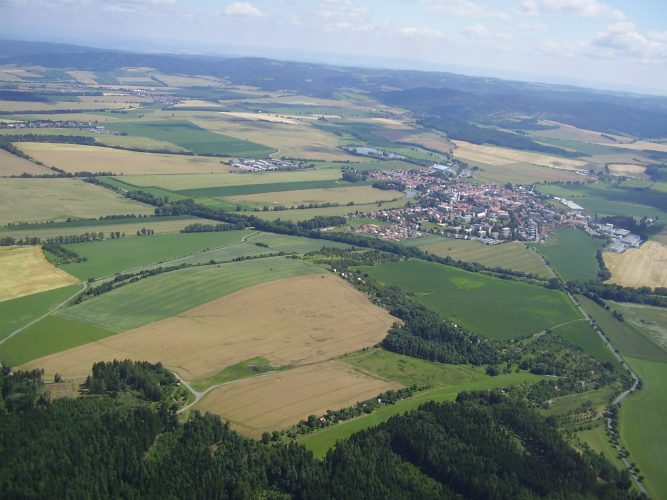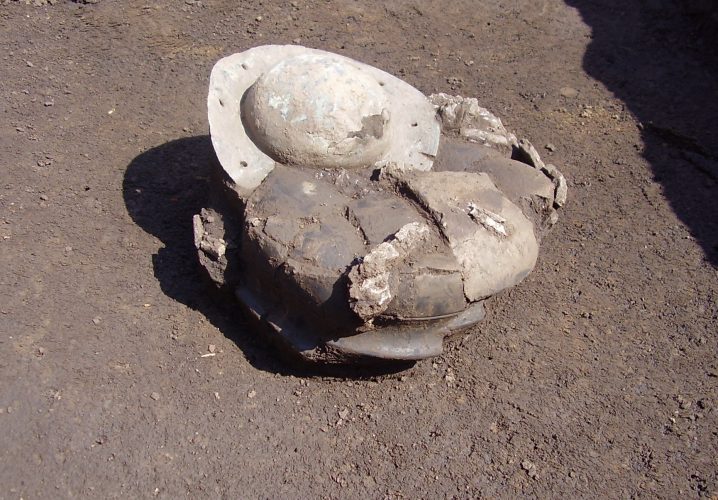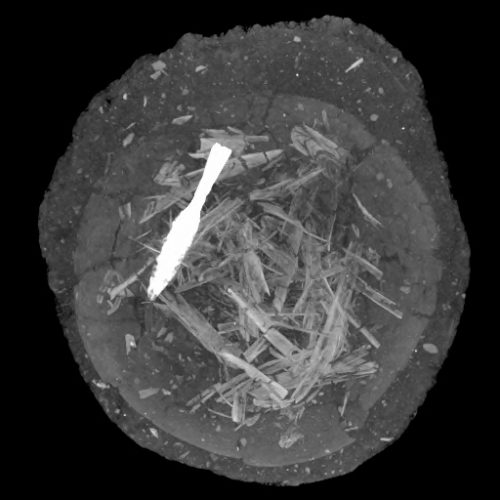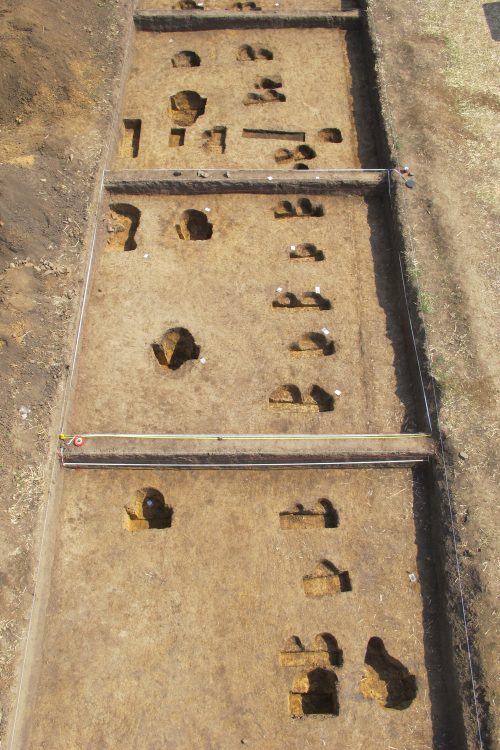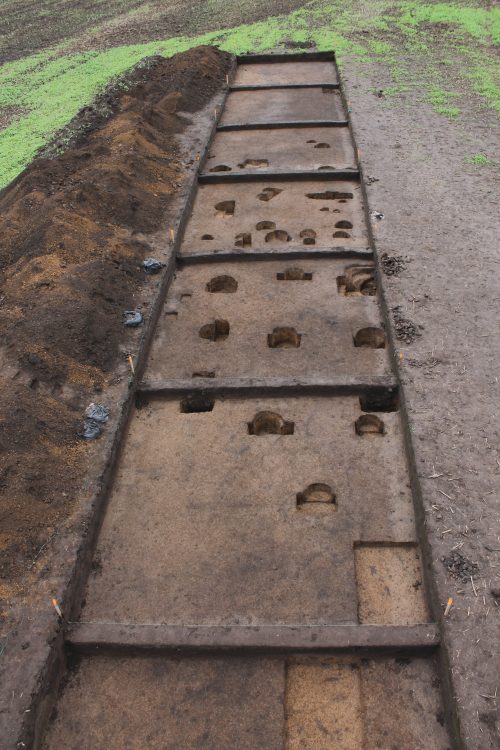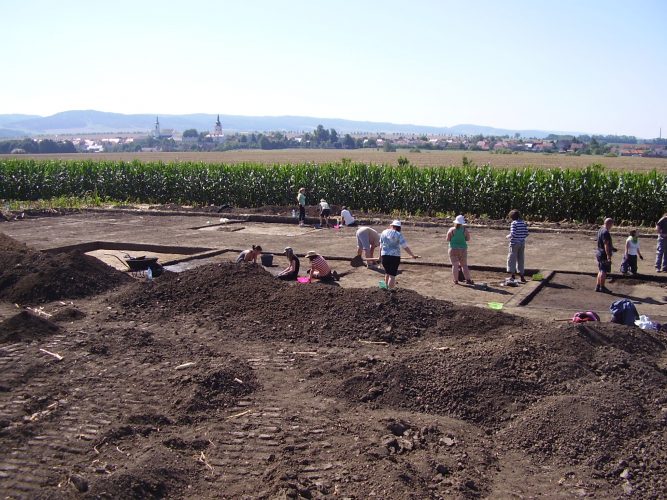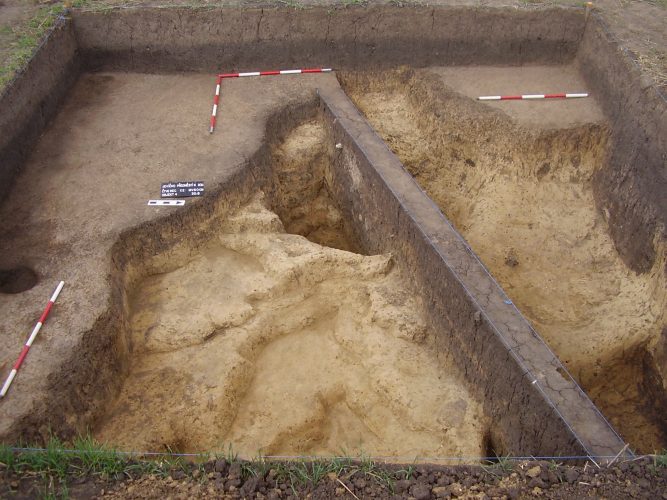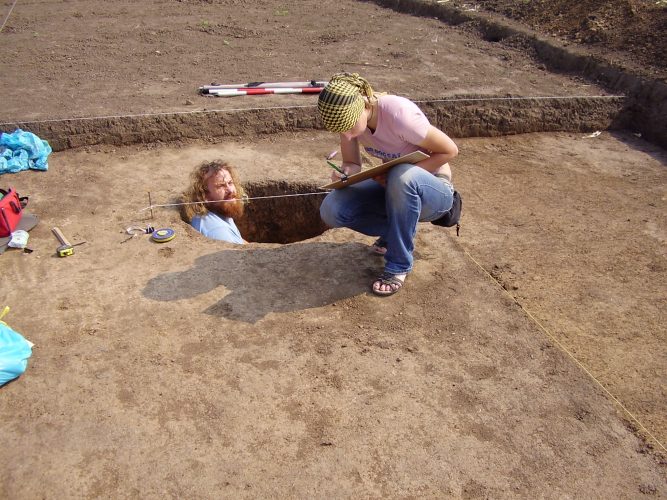Our systematic long-term survey in the Malá Haná region, between the towns of Boskovice and Moravská Třebová, has been conducted since 2010. The research area is located in the territory of historic Moravia, more specifically in the today’s South Moravian and Pardubice Regions. The dense concentration of Roman-period sites in the Malá Haná region attests to intensive use of this small enclosed region, protected from the east and west by mountains. When it comes to the sites, especially an early Roman period cemetery known as Jevíčko IV stands out. During a six-year long archaeological excavation led by doc. E. Droberjar (2010–2014 and 2016), 30 graves were excavated and the importance of this site before and probably also during the Marcomannic wars (166-180) was proved. This is attested by grave goods and finds from layers, not only those belonging to the Elbe Germans, but also Roman and East Germanic artefacts (Przeworsk and Wielbark cultures) from a short chronological range. The cremation cemetery was probably linked to a nearby settlement (Jevíčko II), which is situated 1.5 km south of it. Within the cemetery, remains of two settlements were unearthed as well – one much earlier – from the Middle Bronze Age (Middle Danubian Tumulus culture) – and one somewhat later – from the final Roman period. The Germanic settlement from the C3 phase probably consisted of a farmstead with above-ground buildings. Also, at this late Suebian settlement, numerous Roman and late Przeworsk artefacts were discovered. The whole territory of Halá Haná was relatively densely populated by Elbe Germans during the Roman period. The most important period seems to be the time from the mid-2nd century onwards, including the Marcomannic wars. The most northern Roman temporary camp so far was discovered in the cadastral area of Jevíčko. Apart from this, numerous Roman militaria can be found in Malá Haná. This proves that a direct military conflict between the Romans and Germans took place there, probably in the final phase of the Marcomannic wars. During the Roman period, Malá Haná was an intersection of long-distance routes connecting south with north and east with west, i. e. southern Moravia and the Danube region with eastern and central Bohemia. The Roman invasion from the south and the penetration of the bearers of the Przeworsk culture (Vandals) in the 2nd century and especially at the close of the Roman period from the north, seem to confirm the important role of this region. The Elbe Germanic occupation of Malá Haná ended with the departure of the Suebi, who left (probably together with groups of Vandals) the territory of Malá Haná at around 400 AD and migrated southwards to the Danube region, then further to the west and finally to Spain and Portugal.
CONTACT
doc. PhDr. Droberjar Eduard, Dr.
e. eduard.droberjar@uhk.cz
t. +420 493 331 273
[/vc_column_text][/vc_column][/vc_row]

